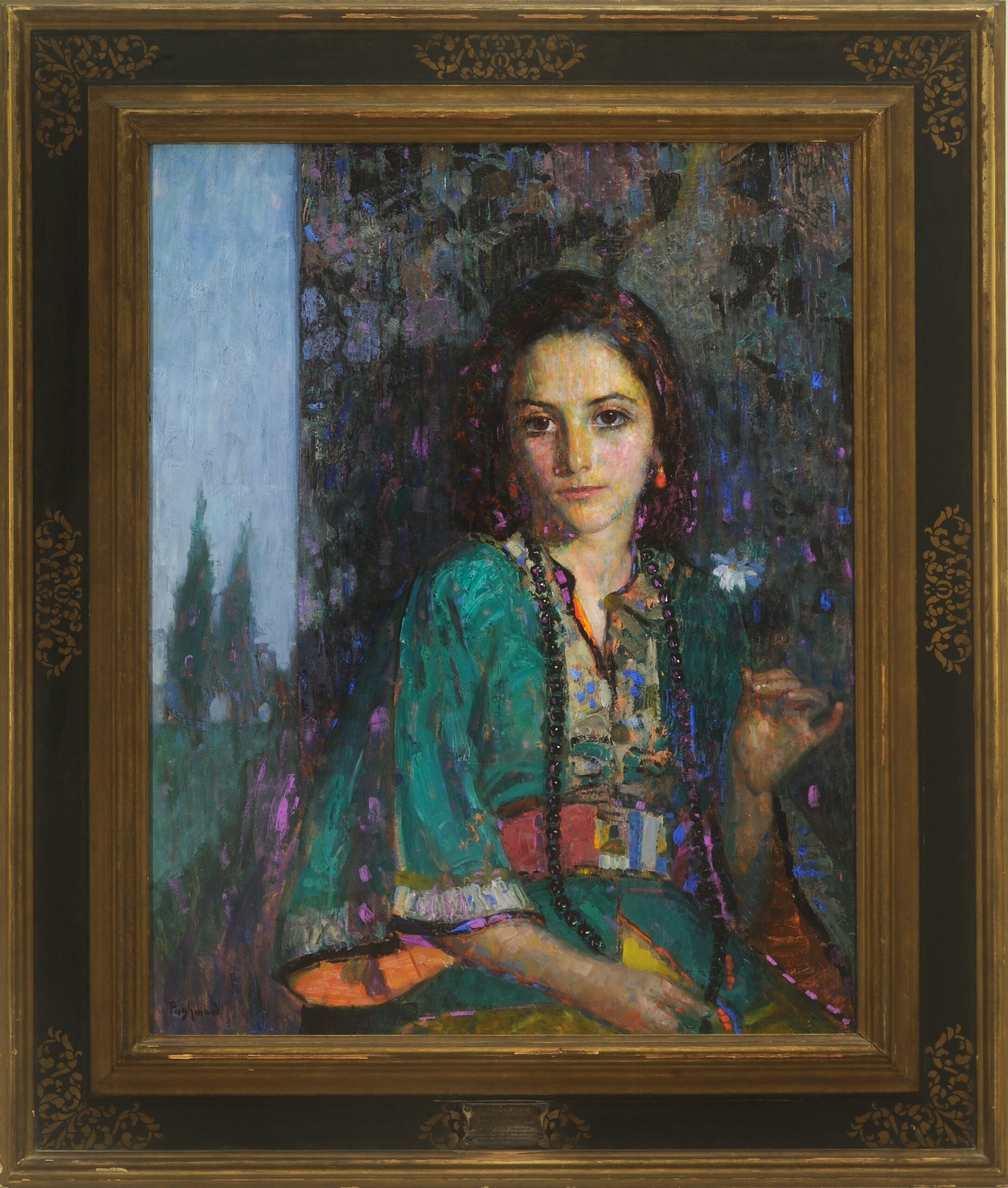“L’Esperance (translated as “Hope”) was painted ca 1916 by Hovsep Pushman (1877-1966) and given to President Woodrow Wilson in 1917 in recognition of the help the United States gave to Armenia. The portrait depicts the artist’s niece, Dora, dressed in traditional Armenian costume, holding a white flower symbolizing hope.
The Near East was in a state of turmoil at the same time as World War I, during Woodrow Wilson’s presidency. Armenian families and their children were devastated by conflict between the Turks and the Armenians. The United States was very active in relief efforts. The painting was presented to President Wilson at the White House on November 27, 1917 by an Armenian delegation on behalf of the artist’s wife. The youngest member of the group, Miss Alidz Kurkjian, presented the painting to Wilson and gave a short speech expressing the Armenian people’s appreciation for the United States’ efforts to help them in their time of need. The inscription on the frame reads: “Given as an expression of thanks for the hope and gratitude his efforts to help suffering Armenia have inspired in the hearts of all Armenian women.” Alidz Kurkjian later said that she saw President Wilson wipe tears from his eyes during her presentation of the painting because he was so touched by it.
L’Esperance hung in the White House through the remainder of Wilson’s final term in office. When the Wilsons moved to S Street in 1921, the President hung it over the fireplace in the drawing room where it remains today.
The artist Hovsep Pushman was born in Armenia in 1877, studied art in Istanbul, Paris, and Chicago, and was later naturalized as a U.S. citizen.

